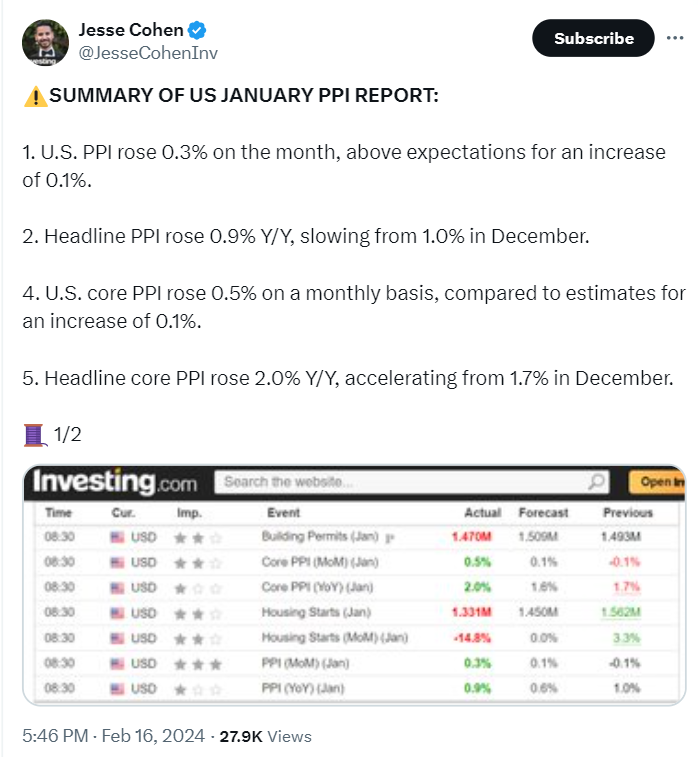
YEREVAN (CoinChapter.com) —The euro fell from a two-day high after recent U.S. producer-side inflation prompted hints that the Federal Reserve may tighten monetary policy further. Meanwhile, the U.S. dollar gained momentum as interest rate traders began adjusting for the Fed’s expected three rate cuts by 2024. During today’s trading session, EUR/USD fell to a low of 1.0732.
However, the currency soon found support and started showing some signs of recovery. At the time of writing, the EUR/USD pair is trading at 1.0775.
EUR/USD falls due to surge in US PPI
The U.S. Bureau of Labor Statistics reported that the producer price index rose 0.3% in January compared to the previous month, exceeding expectations. Core PPI also rose from -0.1% in December to 0.5% compared to the previous month, exceeding expectations.
Moreover, in terms of annual figures, PPI rose 0.9%, slightly lower than in December, while core PPI rose 2%, exceeding expectations (1.6%) and December’s 1.8%.
At the same time, single-family home starts saw a notable decline of 4.7%. However, new construction project permits increased by 1.6%, showing a contrasting trend. This is the highest in almost two years.

According to Rania Gule, market analyst at XS.com, the recent EUR/USD reversal can be attributed to market optimism surrounding the dollar. The gains came despite disappointing U.S. retail sales data.
“The US Dollar Index (DXY) remains positively biased based on expectations that the US Federal Reserve will avoid a rate cut in March and May and a 52% chance of a 25 basis point rate cut in June. There was no significant change in the recent Eurozone fourth quarter gross domestic product (GDP) data.”
Gule wrote in a recent analysis:
European Economy: Moderate Growth Despite Challenges
Meanwhile, the economic situation in the European Union (EU) is showing moderate growth. This is combined with low inflation amid internal and external pressures.
“Inflation, a major concern for the market, is expected to decline from 5.4% in 2023 to 2.7% in 2024 and further decline to 2.1% in 2025. This demonstrates the EU’s resilience in the face of energy shocks and inflationary pressures. “The ability to avoid a recession.”
Gule insists.
But analysts say Germany, the bloc’s largest economy, faces enormous challenges. These include recessionary trends and soaring inflation rates.
The Euro/Dollar exchange rate is determined by the monetary policy of the European Central Bank (ECB). Additionally, the EU’s proficiency in dealing with foreign policy issues, especially those related to trade dynamics and geopolitical tensions, will have an impact on both exchange rates.
Domestic and international issues in the US and EU will have a significant impact on the EUR/US exchange rate. Gule believes that the future trajectory of the currency pair will depend on the effectiveness of policy measures deployed by the US and EU authorities to address common issues.
